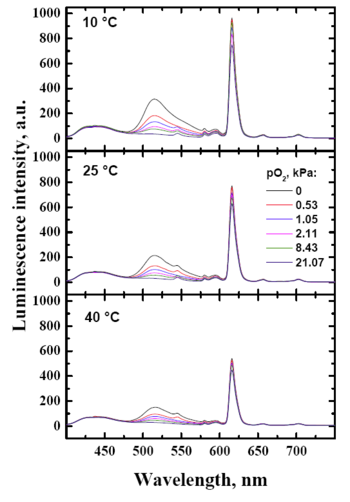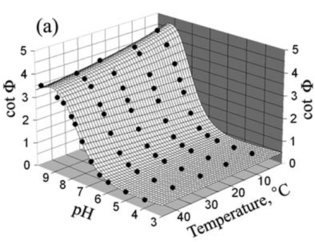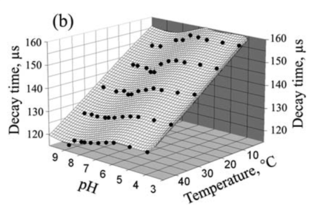Figure 7.1. Emission spectra of the dually-sensing material (λexc 390 nm) based on polystyrene-acridone conjugate doped with 2 % w/w of gadolinium(III), 0.5 % w/w of europium(III) complex and 1 % w/w of polyfluorene conjugated polymer. Oxygen partial pressures are identical for all the temperatures. Based on source [38]
Figure 7.2. 3D calibration plots for pH (a) and temperature (b) in the dual sensor based on SNARF-decylester as the pH probe and Cr-YAB as the temperature probe embedded into polyurethane hydrogel. Dots are the experimental points (average from 3 independent measurements), surfaces – a fit. Reproduced from ref. [38, 42].



